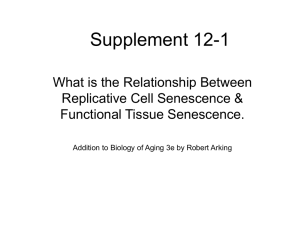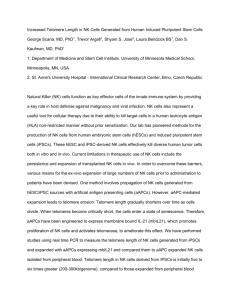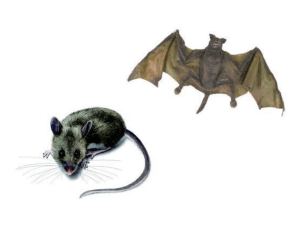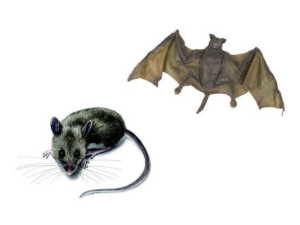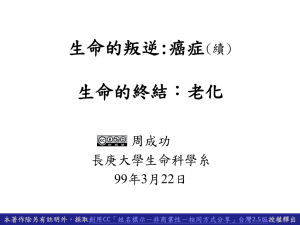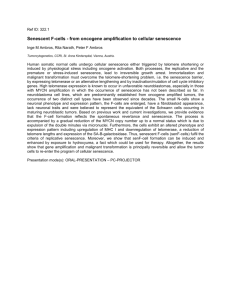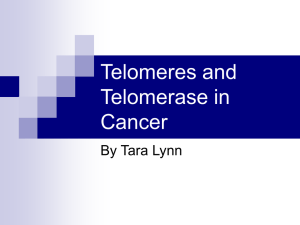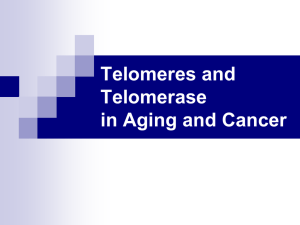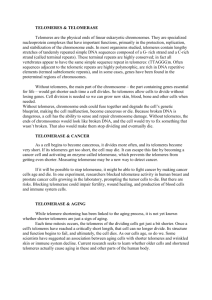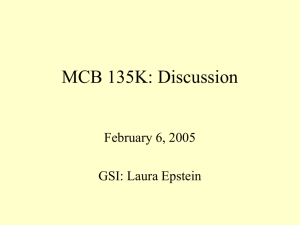telomerasa la clave para retrasar el envejecimiento
advertisement
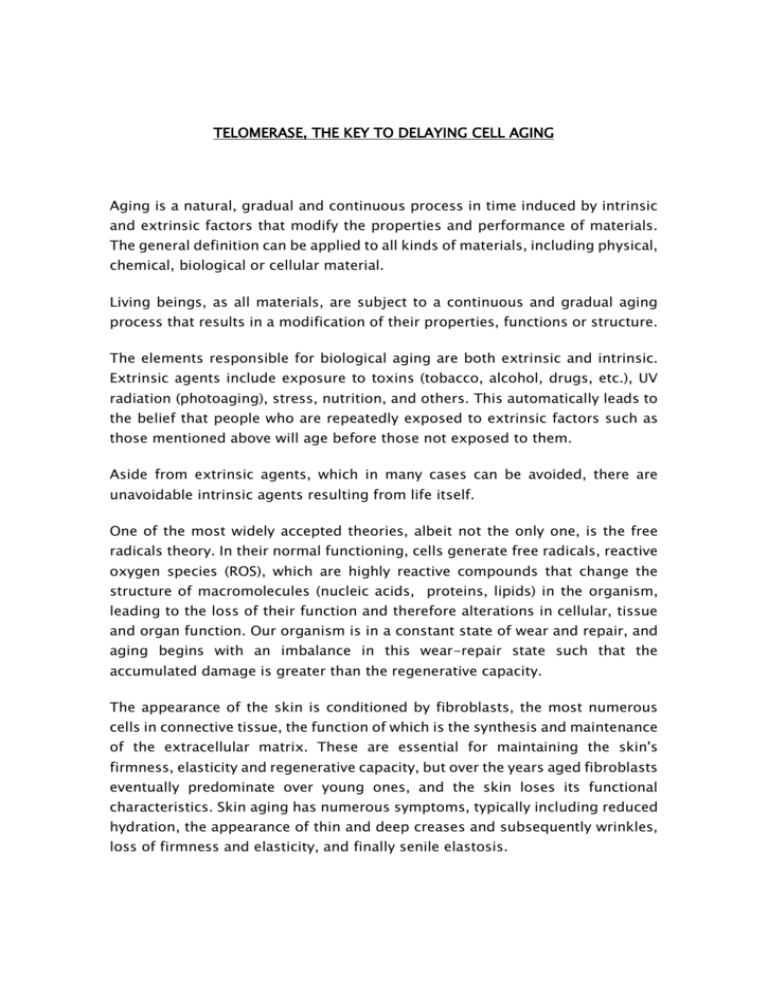
TELOMERASE, THE KEY TO DELAYING CELL AGING Aging is a natural, gradual and continuous process in time induced by intrinsic and extrinsic factors that modify the properties and performance of materials. The general definition can be applied to all kinds of materials, including physical, chemical, biological or cellular material. Living beings, as all materials, are subject to a continuous and gradual aging process that results in a modification of their properties, functions or structure. The elements responsible for biological aging are both extrinsic and intrinsic. Extrinsic agents include exposure to toxins (tobacco, alcohol, drugs, etc.), UV radiation (photoaging), stress, nutrition, and others. This automatically leads to the belief that people who are repeatedly exposed to extrinsic factors such as those mentioned above will age before those not exposed to them. Aside from extrinsic agents, which in many cases can be avoided, there are unavoidable intrinsic agents resulting from life itself. One of the most widely accepted theories, albeit not the only one, is the free radicals theory. In their normal functioning, cells generate free radicals, reactive oxygen species (ROS), which are highly reactive compounds that change the structure of macromolecules (nucleic acids, proteins, lipids) in the organism, leading to the loss of their function and therefore alterations in cellular, tissue and organ function. Our organism is in a constant state of wear and repair, and aging begins with an imbalance in this wear-repair state such that the accumulated damage is greater than the regenerative capacity. The appearance of the skin is conditioned by fibroblasts, the most numerous cells in connective tissue, the function of which is the synthesis and maintenance of the extracellular matrix. These are essential for maintaining the skin's firmness, elasticity and regenerative capacity, but over the years aged fibroblasts eventually predominate over young ones, and the skin loses its functional characteristics. Skin aging has numerous symptoms, typically including reduced hydration, the appearance of thin and deep creases and subsequently wrinkles, loss of firmness and elasticity, and finally senile elastosis. In addition, the renewal rate of epidermal cells falls, reducing skin thickness, and sebaceous glands atrophy, reducing sebum secretion, which reduces the feeling of skin comfort. The damage caused by internal and external factors is gradual and cumulative, and results in the onset of the deterioration associated with aged skin. Cells reduce their metabolic and replicative capacity over time as a result of their morphological and biochemical changes. This affects their function and reduces their number of duplications. This loss of replicative capacity is known as replicative or cellular senescence. The existence of a molecular clock has been suggested, marking the moment at which the cell's replicative capacity ends and the cell becomes senescent. Elizabeth Blackburn, Carol Greider and Jack Szostak were awarded the 2009 Nobel Prize in Medicine for their work relating telomeres to chromosomal protection and cellular aging, as well as for the discovery of telomerase, an enzyme that protects telomeres. Telomeres (from the Greek telos, "end" and meros, "part") are the end parts of chromosomes and consist of highly repetitive, non-coding DNA regions, with the main function of providing structural stability to chromosomes in eukaryotic cells, cell division and the lifetime of cell lines. (Fig. 1) Fig 1. Image of a chromosome (left) and a telomere (right) As a eukaryotic cell carries out the cellular division process, mitosis, it loses fragments of telomeres due to the non-replication of the ends of the linear DNA sequences, causing their shortening and leading to a gradual decrease in the functionality of the cell and ultimately to its death. At the same time, the extrinsic and intrinsic factors involved in aging contribute to shortening the telomeres. Telomeres of differentiated cells will be shorter in cells that have divided more times than in younger cells. In addition, cells of older organisms divide fewer times than cells of younger organisms. Several experimental studies have shown that the gradual shortening of the telomeres in the division process of adult cells leads to lower rates of cell proliferation and triggers the senescence process. During cell division in stage S, in which the DNA of the mother cell is replicated for a correct and equitable transmission of the genetic information to the daughter cells, from 50 to 200 base pairs of the telomere DNA are not replicated. For this reason, telomeres are shortened in each cellular cycle, limiting the number of divisions and thereby the lifetime of the cell. Telomerase is a ribonucleoprotein that is meant to add the DNA fragments lost by the telomere in each cell division, preventing it from shortening, so that the length of the telomere remains stable throughout the lifetime of certain types of cell. Telomerase activity is the main mechanism that protects telomere length in each cell division, thereby increasing the number of divisions of the cells. Telomerase is an enzyme that annuls cellular aging and death. Telomerase is expressed in all types of cells during embryonic development, and after the formation and development of the embryo it is restricted to certain cell lines, such as adult stem cells and germ cells, and is repressed in all other somatic cells, so that most cells in our organism have a limited life span. It has been shown that the number of cellular duplications of fibroblasts depends on age. Fetal fibroblasts can duplicate an average of 50 times before they enter senescence, while after the age of 30 the number of duplications falls by 10 % each decade, entering senescence when the cells lose their reproductive capacity. (Fig. 2) 60 50 40 30 Número duplicaciones 20 10 0 0 20 40 60 80 Years Fig. 2. Number of duplications of fibroblasts as a function of age The number of substances that induce the expression of telomerase in cells is one of the aims of research on delaying aging, in order to find the 'pill of eternal youth'. In the area of cosmetic research, studies focus on finding compounds that increase the duplication rate of fibroblasts in vitro, relating them to in vivo trials that evaluate the structural properties of skin in an objective manner, such as firmness, elasticity or cutaneous micro-relief. Studies conducted with a purified fraction, Baicalin, of the extract of roots of the plant Scutellaria baicalensis (which is widely used in traditional Chinese medicine where it is known as Haung-qin) reveal that it induces the cellular expression of telomerase in human fibroblast cultures, delaying the onset of senescence as it increases the number of duplications by five, that is, 10% more than the 50 duplications performed on average by fibroblasts before entering senescence. (Fig.3) % accumulated divisions 25 20 15 Scutellaria baicalensis 10 Control 5 0 0 20 40 60 80 100 Days Fig. 3. Increase in number of divisions of fibroblasts, expressed as a %. In addition, in vitro results have been corroborated by in vivo studies, as after continuous application on the skin for 56 days of the purified fraction, Baicalin, of the extract of Scutellaria baicalensis in a concentration of 1.5% as a cosmetic formulation, compared to the same cosmetic formulation without the extract, it was observed that cutaneous micro-relief improved by 13%, firmness improved by 12.5% and elasticity improved by 12.4%. These improvements can be attributed to the delayed senescence of the fibroblasts. Time passes inevitably, and it is impossible to delay chronological aging. But is it possible to delay biological aging? In light of current knowledge, telomerase is a key to delaying biological aging, or at least to mitigating its effects. José Pardo Industrial Property and Documentation Dept. Laboratorios ATACHE TBI is the Exclusive Distributor for Atache in the United States
